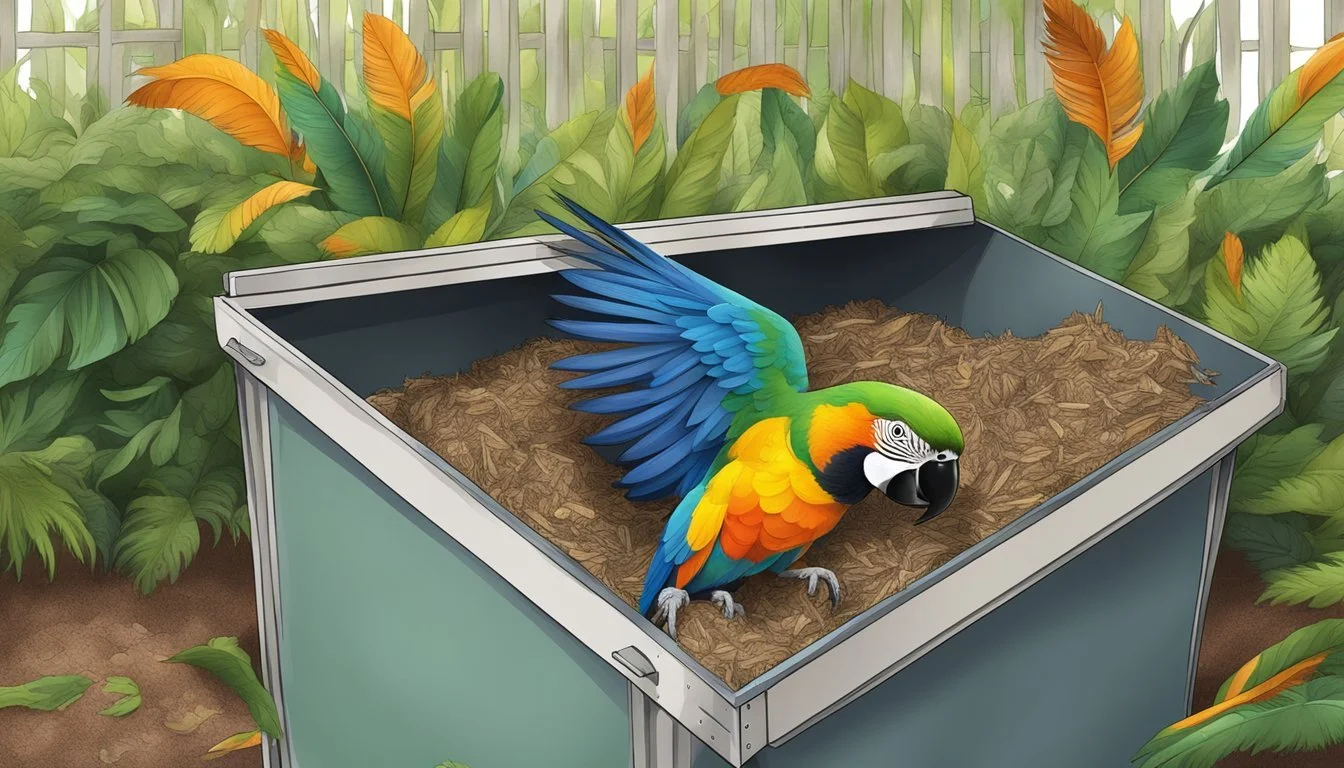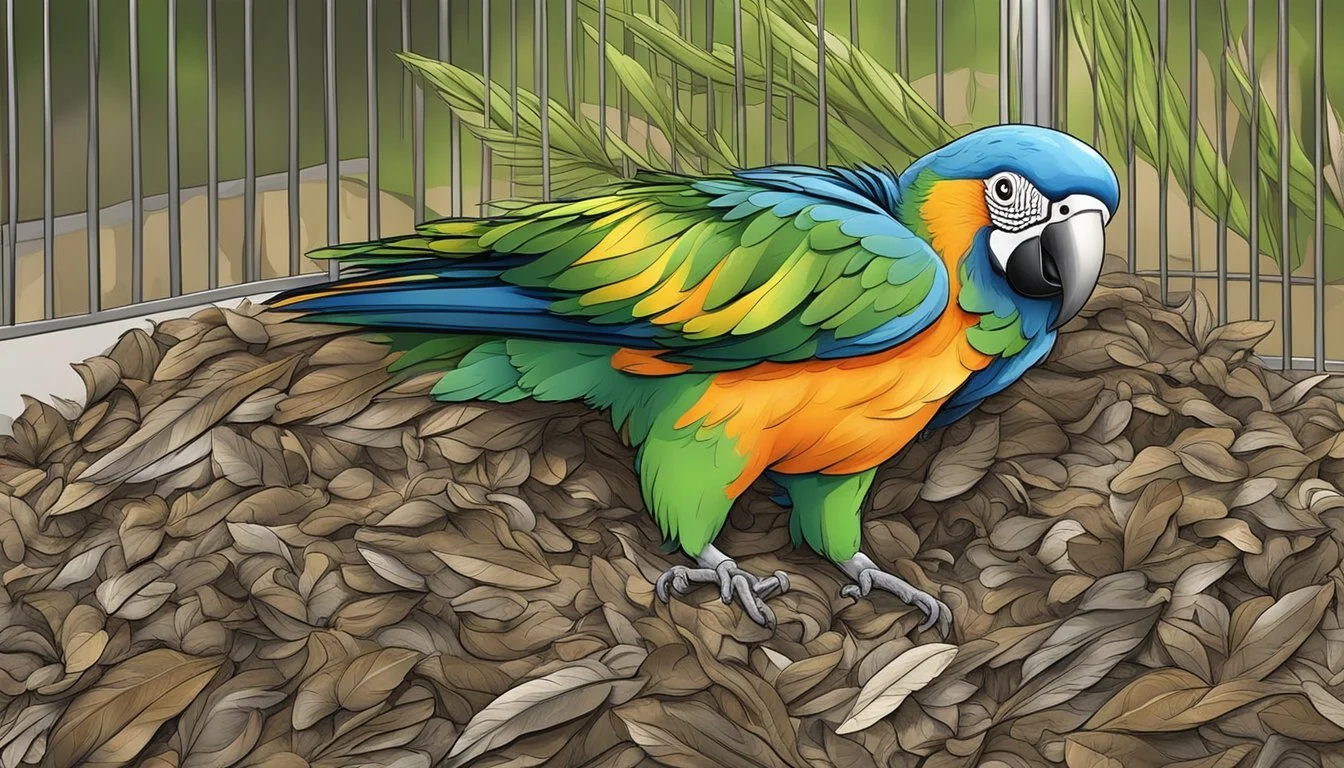Can You Compost Parrot Feathers?
Understanding Avian Waste in Composting Systems
Composting is a method of recycling organic waste into nutrient-rich soil conditioner, and it can include a wide array of materials. Parrot feathers, along with other bird feathers, are recognized as compostable items. They break down within a few months when incorporated into a compost pile, especially if they are mixed properly with carbon-rich materials.
Feathers are high in nitrogen, one of the essential components that aids in the composting process. When adding parrot feathers to compost, it's important to ensure that they are not from birds that are contaminated or diseased, as this could pose a risk to the compost quality. To avoid feathers being carried away by the wind, they should be covered with heavier composting materials or pre-soaked to weigh them down.
In a balanced compost pile, feathers degrade without causing any harm to the surrounding environment. The breakdown of feathers does not only dispose of the waste effectively but also enriches the resulting compost with beneficial nutrients, which in turn can support plant growth when applied to the garden. Thus, composting parrot feathers is both feasible and advantageous for gardeners looking to improve their soil quality naturally.
Benefits of Composting Feathers
Composting parrot feathers, similar to other avian feathers, can bring several advantages to gardens and contribute to sustainable practices. These benefits range from enhancing soil nutrient content to promoting waste reduction.
Nitrogen Content in Feathers
Feathers are a significant source of nitrogen, a vital nutrient for plant growth. The protein keratin, which makes up most of the feather's structure, breaks down over time to release nitrogen. Given that parrot feathers can contain approximately 15% nitrogen, they are an excellent addition to a compost pile, providing a boost to the "green" materials, which are needed to balance the carbon-rich "brown" materials.
Using Feather Waste Sustainably
Incorporating feathers into compost represents a sustainable approach to managing waste. Rather than ending up in landfills, where they contribute little to soil improvement, feathers processed through composting serve a new purpose. This practice aligns with principles of sustainable agriculture, which prioritize the reuse of organic materials within the ecosystem.
Improvement of Soil Structure
The addition of composted feathers to soil can significantly improve its structure. As feathers decompose, they not only release valuable nutrients like nitrogen but also create air pockets, which enhance soil aeration. Improved aeration and nutrient content are essential for healthy root development and consequently, for a thriving garden. This addition of organic material also supports the creation of humus, a critical component in fertile soil formation.
The Basics of Composting
Composting transforms organic materials into a nutrient-rich soil amendment through controlled decomposition. It's a cornerstone of eco-friendly gardening and waste management.
Composting Principles
Composting is governed by four fundamental elements: carbon, nitrogen, oxygen, and moisture. These elements, when balanced, facilitate the decomposition of organic materials by microorganisms. An ideal composting setup alternates layers of green and brown materials to ensure a proper carbon to nitrogen ratio. Green materials, rich in nitrogen, include kitchen scraps and grass clippings, while brown materials, rich in carbon, consist of leaves, straw, and cardboard. Adequate aeration and moisture are crucial, as they help to break down materials faster and prevent unpleasant odors. Therefore, it's essential to turn the compost regularly and keep it damp. A composting bin can be a simple pile in a corner of the yard or contained within a structure to maintain tidiness and retain heat.
Types of Compostable Materials
Compostable materials are often categorized into greens for nitrogen and browns for carbon. Here’s a brief insight into what can be added:
Greens (Nitrogen-rich)
Fruit and vegetable scraps
Coffee grounds and filters
Grass clippings
Fresh plant materials
Browns (Carbon-rich)
Dry leaves and twigs
Paper and cardboard, shredded
Straw and hay
Sawdust (from untreated wood)
By maintaining the right balance of greens and browns, one can ensure effective composting. Organic materials should be chopped or shredded to increase surface area, thus expediting decomposition. While a wide array of kitchen and yard waste can go into a composting bin, it's essential to exclude meat, dairy, and oily foods, as they can attract pests and cause an unpleasant smell.
How to Compost Feathers
Composting feathers is an effective way to recycle what many consider waste materials by turning bird feathers into valuable compost for the garden. These nitrogen-rich materials require proper preparation and a balance of composting elements to decompose effectively.
Preparing Feathers for Composting
To prepare feathers for composting, one should ensure that they are clean and free from potential pathogens. Feathers from pets or domestic birds are commonly used. The preparatory step involves:
Chopping or shredding the feathers to accelerate the decomposition process. Smaller pieces provide more surface area for microbes to work on, hastening their breakdown within the compost bin.
Balancing Browns and Greens
Feathers, being nitrogen-rich, are categorized as "greens" in composting terminology. For them to decompose properly, balancing them with "browns" – carbon-rich materials – is crucial. Here's a simple guide to maintaining this balance:
Aim for a ratio of roughly 30:1 of browns to greens (carbon to nitrogen).
Add carbon materials like dry leaves, straw, or cardboard to mitigate any potential odor from the high nitrogen content of the feathers.
By following these steps with diligence, one can add bird feathers to their composting regimen and enrich their compost with the nourishing benefits feathers provide.
Common Issues and Solutions
Composting parrot feathers can be an ecologically sound practice; however, it requires attention to detail in order to prevent issues such as pests, disease transmission, and moisture imbalance.
Avoiding Pests and Odors
Key Points:
Seal the compost bin: Ensure that the compost bin is well-sealed to prevent flies and other pests from gaining access.
Layering: Place feathers in between layers of brown compost materials like leaves and cardboard to mask odors that attract pests.
Regular turning: Turn the compost pile regularly to aerate it, which helps to speed up the decomposition process and reduces odors.
Diseased Feathers Precautions
Key Points:
Identification: Before adding feathers to a compost pile, one should identify if the feathers come from a diseased bird.
Quarantine: Feathers suspected to be diseased should not be placed in the compost. They should be disposed of safely in accordance with local guidelines to prevent any spread of disease.
Maintaining Proper Moisture Levels
Key Points:
Balance wet and dry ingredients: The compost pile should consist of an appropriate balance between green (wet) and brown (dry) materials to maintain optimal moisture levels.
Covering the pile: Use a tarp or compost bin lid to protect the pile from excessive rain, which could lead to waterlogging.
Regular checks: Monitor the moisture level of the compost pile regularly and adjust as necessary to ensure it remains damp but not soggy, which is favourable for decomposition without fostering mold growth.
Composting Beyond Feathers
While parrot feathers can add valuable nutrients to a compost pile, successful composting involves a diverse mix of organic waste for optimal decomposition and nutrient balance.
Incorporating Additional Organic Waste
In a compost pile, leaves act as a carbon source that balances the nitrogen provided by feathers. Fruit scraps introduce beneficial sugars and acids, which help feed the microorganisms that break down the waste. It's important that the fruit is free of any inedible coatings or pesticides. Adding coffee grounds and tea bags provides a moderate nitrogen boost and some essential nutrients. When using tea bags, it's crucial to use those made from natural materials to ensure they decompose effectively.
Common Compost Additives and Their Effects
Additive Effect on Compost Fur and Hair Contribute protein and nitrogen but should be free of chemical treatments. Paper Napkins Add bulk and help absorb excess moisture, which is essential for the composting process, particularly if they are unbleached and not contaminated with oil or chemicals.
Microorganisms are the "workforce" of any compost pile, breaking down organic matter into humus. The protein in fur, hair, and feathers offers these microbes the nutrients they require to thrive. However, it's essential to avoid an overabundance, as excess protein can lead to foul odors and attract pests.
Advanced Composting Techniques
When composting parrot feathers, using advanced techniques can optimize the breakdown process and enrich the compost.
Vermicomposting with Feathers
In vermicomposting, Eisenia fetida worms or other composting worms can be introduced to the composting bin to aid the decomposition of organic materials. Parrot feathers can be broken down by these worms as they have the capacity to process nitrogen-rich substances like feathers. It is crucial to shred the feathers prior to adding them to the bin, to allow for easier consumption by the worms. The feathers should be mixed with a balanced carbon source such as shredded paper or coir to ensure an optimal environment for the worms and microorganisms.
Hot Composting for Faster Decomposition
Hot composting is an accelerated method that can hasten the decomposing process of parrot feathers. This technique requires one to maintain a composting bin with a balanced ratio of greens, such as feathers, and browns, like dry leaves or sawdust. By turning the compost regularly and ensuring it remains moist, heat is generated internally, reaching temperatures sufficient to speed up the activity of microorganisms. Aim for a temperature range between 135-160°F (57-71°C), which is ideal for the efficient decomposition of materials including chicken or parrot feathers.
Environmental Impact and Sustainability
The practice of composting parrot feathers can have significant, beneficial effects on environmental conservation and agricultural sustainability. It reduces landfill waste and supports soil health.
Reducing Landfill Waste with Composting
When disposed of in a landfill, feathers and other organic matter contribute to environmental degradation. They may release methane, a potent greenhouse gas, as they decompose anaerobically (without oxygen). However, composting parrot feathers is a proactive way to mitigate this issue. The decomposition of feathers in a compost setting occurs aerobically (with oxygen), significantly reducing methane emissions.
Landfill Impact:
Traditional Disposal: Increases landfill mass and methane production.
Composting: Reduces contribution to landfill and greenhouse gas emissions.
Composting and Its Role in Sustainable Agriculture
Compost as Fertilizer:
Nutrient-Rich: Feather compost is a high-nitrogen fertilizer, beneficial for plant growth.
Soil Structure: Improves soil texture and water retention capacity.
Sustainable Practices:
Agricultural Growth: Healthier soils lead to more robust crop growth and higher yields.
Environmental Impact: Less reliance on chemical fertilizers, reducing runoff and water pollution.
In sustainable agriculture, composted feathers serve as an effective fertilizer, enriching the soil without the environmental toll associated with synthetic options. This practice supports a circular economy, where waste is minimized and natural resources are used more efficiently.
Alternative Uses for Feathers
Parrot feathers, known for their vibrant colors and durability, find purpose beyond compost. They serve as an essential component in various crafts and industries, offering both aesthetic appeal and functionality.
Feathers in Crafts and Industry
In crafts, feathers are a popular choice for artisans. They enhance the visual appeal of products such as:
Jewelry: Earrings and necklaces adorned with feathers provide a natural and bohemian look.
Costumes: Used in masquerade masks and theatrical outfits, feathers add flair and drama.
Home Décor: Feathers are used in dreamcatchers, wreaths, and as accents in floral arrangements.
The industry also capitalizes on the unique properties of feathers:
Fishing: They play a crucial role in creating realistic fishing lures.
Fashion: High-fashion designers incorporate feathers into garments for texture and volume.
In the garden, feathers can be used as an unconventional but effective natural fertilizer, as they decompose over time releasing nitrogen, which aids plant growth. This makes them beneficial for gardens and flowers. However, unlike conventional fertilizers, feathers break down slowly and may be used in tandem with quicker-acting fertilizers to sustain long-term soil health.










